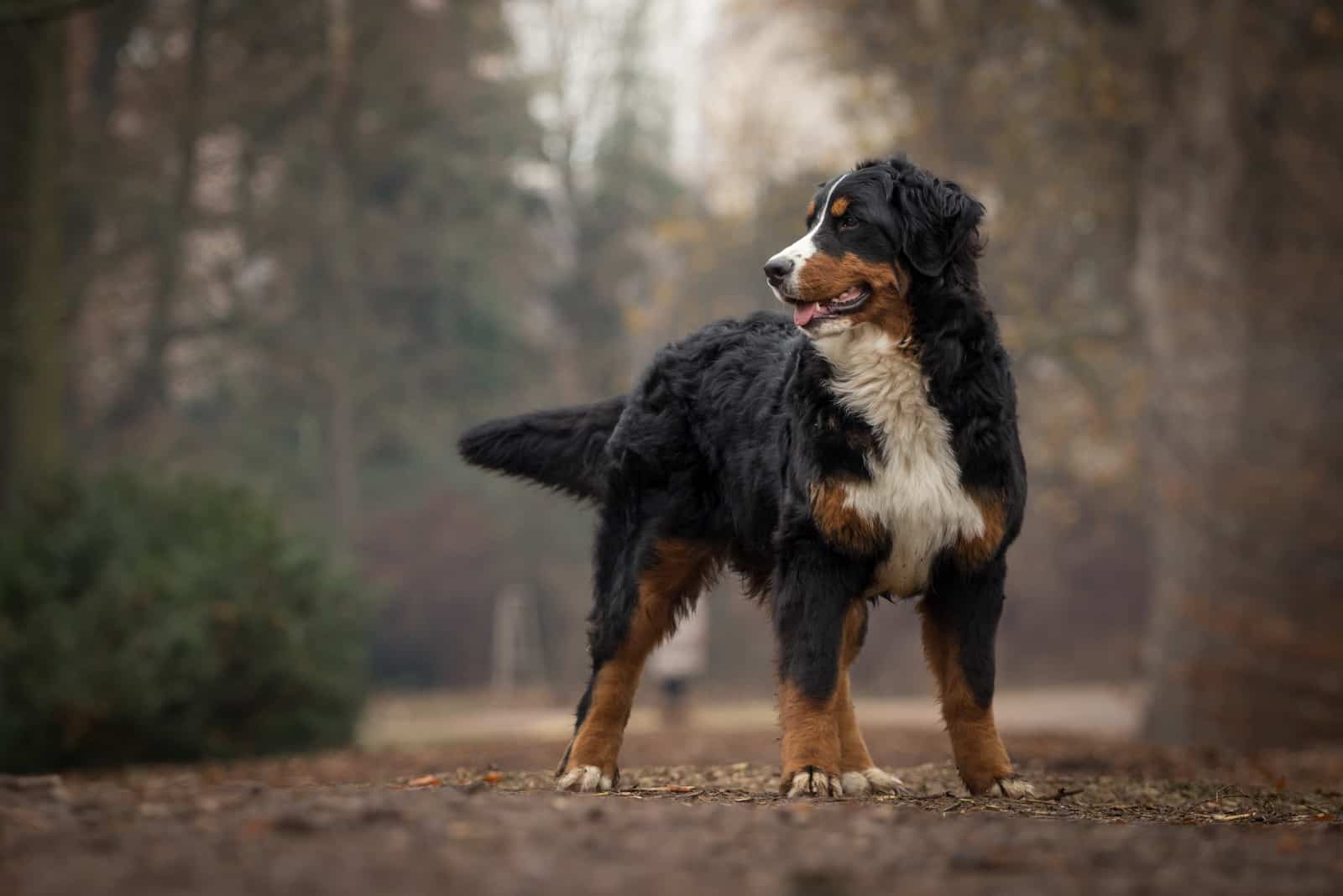A Bernese Mountain Dog growth chart is a very important part of the development of these canines, as it follows their growth through different phases of their life until they’re adults.
Bernese Mountain Dogs are considered the best dogs, not only for herding and keeping their owners warm, but also because they have a kind temperament and great strength that they will rarely display in family gatherings.
Understanding the size of your prospective pet is essential before selecting a new member of the family.
These teddy-bear-looking canines are indeed special, which is why we decided to write more about their expected size to help you prepare for this big pooch.
Bernese Mountain Dog Growth Chart
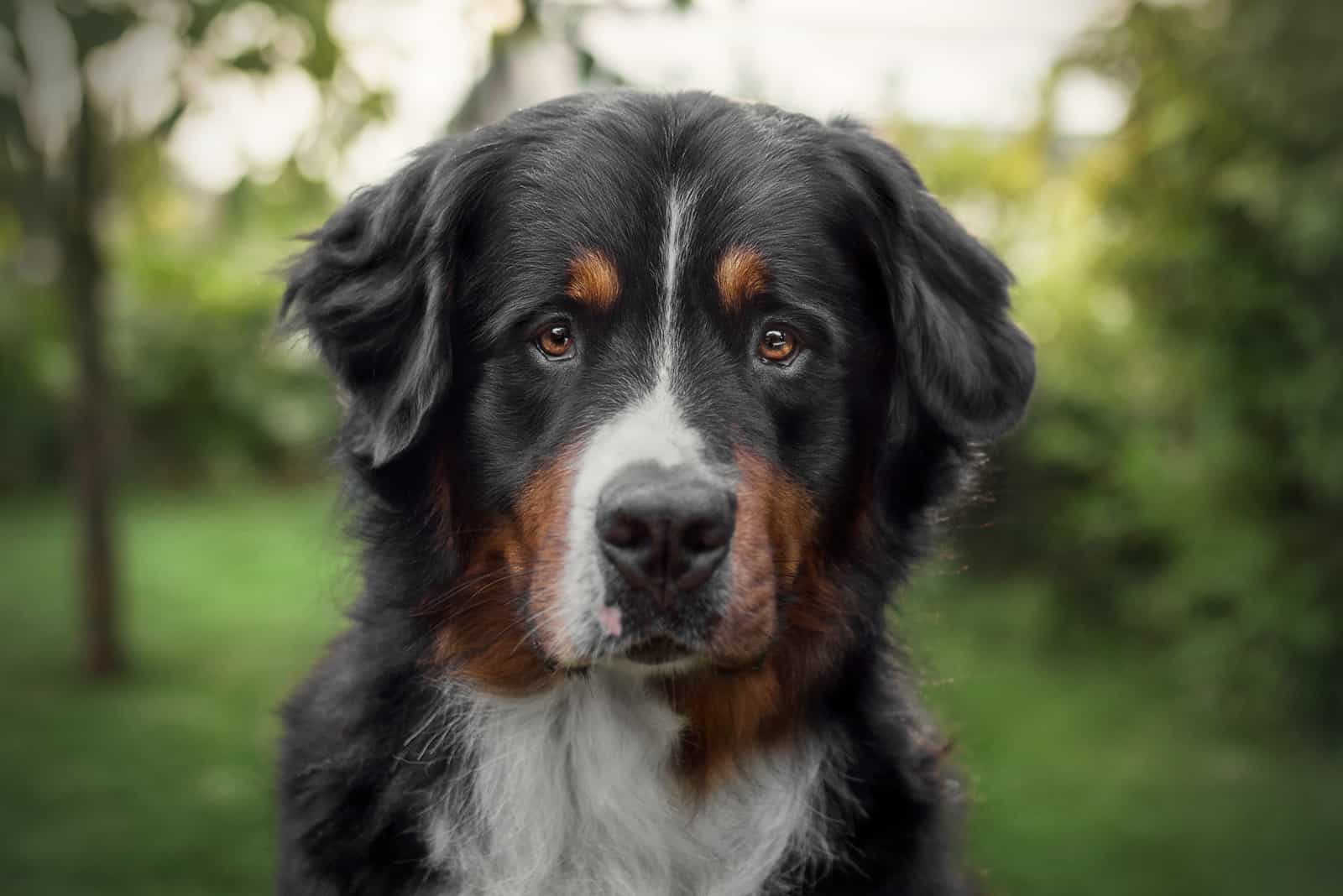
Owners of Bernese Mountain Dogs should always check the growth charts of their pets, especially during the first year of their lives, to make sure that they’re hitting their milestones at the proper times.
It’s interesting to notice that these canines have a surprisingly small body frame during the first month of their lives. However, this quickly changes as they grow older so that in just two months, they reach more than 20 pounds in weight and almost ten inches in height.
This dog chart will also help you determine a balanced diet for your large pup as you can follow their development in a healthy way:
[table id=620 /]
Bernese Mountain Dog Puppy Growth Chart Through Weeks And Months
2 Weeks
At the age of two weeks, Bernese Mountain Dogs have not developed the ability to see or hear, but they are already characterized by enormous heads and powerful jaws.
They usually spend this stage of their lives eating and resting, but they also make efforts to stand up and attempt to sit up straight. The siblings begin to pay attention to each other at this point in life.
During this period, the breeders and owners of Berners aren’t supposed to engage in any type of activity with the puppies, as they’re still strongly attached to their mothers.
First Three Months
The eyes of Bernese puppies start to open during this period, although they’re still not able to see the environment clearly.
Their attempts to walk properly aren’t a complete success, but as they get closer to the third month of their lives, Berners become more stable on their legs.
Even at this tender age, they adore engaging in close interaction with their owners and with one another. These adorable pups love to cuddle and spend time in their owners’ laps.
At the age of six weeks, Bernese pups are highly energetic and chew everything that comes into their field of vision. They have excellent synchronization between their eyes and their mouths.
At the age of two months, the puppies are old enough to travel to their forever homes with their new owners.
Third Month
Puppies begin to seem larger, and their bodies begin to appear slimmer between the ages of ten and twelve weeks and continue to do so until they are sixteen weeks old.
You can start house training your puppy at about this time, but you shouldn’t anticipate that it will understand when it’s supposed to go outdoors to do its business just yet.
This is the perfect time to start with the socialization training of your pup so they can acquire good behavior from early puppyhood.
You should already think about the purchase of chew toys at this point to prevent your pup from chewing on your furniture and shoes.
Keep in mind that even though they’re still puppies and behave like ones, Berners will already start to look more like large dogs.
Fourth Month

Bernese Mountain Dog puppies can weigh anywhere from 33 to 57 pounds, depending on the size of the individual canine.
They might start losing their puppy teeth, which means that they will enter the process of teething quite soon, which can cause a lot of stress and discomfort.
If you notice that your pup is in pain, try to offer them softer dog food to prevent any more pressure on their tender gums.
Five To Eight Months
Berner puppies will be teething intensively during this period until they grow adult teeth, so don’t be surprised if they don’t gain the maximum weight stated in the dog weight chart for this period.
Loss of appetite is a natural occurrence during this period, but if you notice other symptoms like lethargy or refusal to play or go outside for daily walks, it would be better to take your pup to the vet, just to exclude any potential health issues.
Excessive shedding of puppy fur happens during this period as well, which is why it’s recommended to brush your pup at least once a day so it doesn’t leave loose hair all over your house.
Over the course of the next few weeks, the adult fur should appear, although the hair around the ears usually goes last.
It is fairly common for Bernese pups of this age to experience many hormonal changes, creating the appearance of uneven development in the sense that the head or some other part doesn’t follow the same growth rate as the rest of the body.
Eight To Eleven Months
By the time your dog is eight months old, you will have a fairly clear estimation of the size it will eventually reach. It’s very important to maintain a healthy weight at this point to prevent obesity, which is common for Mastiff types of dog breeds like Bernese Mountain Dogs.
Their puppy weight is slowly becoming its adult weight, but the full maturity in both weight and height shouldn’t appear until they’re over one year of age.
At this point, their adult fur is still developing and will continue to do so over the course of the next few months.
Additionally, this is the time period during which Bernese mountain dogs begin to develop a feathery type of hair around their legs.
Hormonal changes that occur during this period might cause these pups to behave incorrectly, which can be difficult for dog owners to deal with.
That is why it’s crucial to continue with obedience and socialization training during this time of their lives, or else all your efforts up to now will go in vain.
A significant number of dog owners choose to spay or neuter their pets before they reach maturity.
12 Months
This is one of the most important milestones for these big dogs, as they turn into adult dogs as they reach twelve months of age.
One of the biggest challenges during this period is their behavior, as most Berners will reach their adult size, although their behavior will still resemble puppies more than mature dogs.
You should keep in mind that these canines don’t seem to grow up too quickly.
The majority of Berners, both male and female dogs, don’t even begin to approach their mature attitude until between the ages of two and three.
These pups are working dogs, so they have a great amount of strength and you shouldn’t underestimate their power, which can be destructive if they’re not properly trained.
If the spay/neuter procedure hasn’t been done up to this point, now is the right time.
Bernese Mountain Dog Growth Chart Through Adult Years
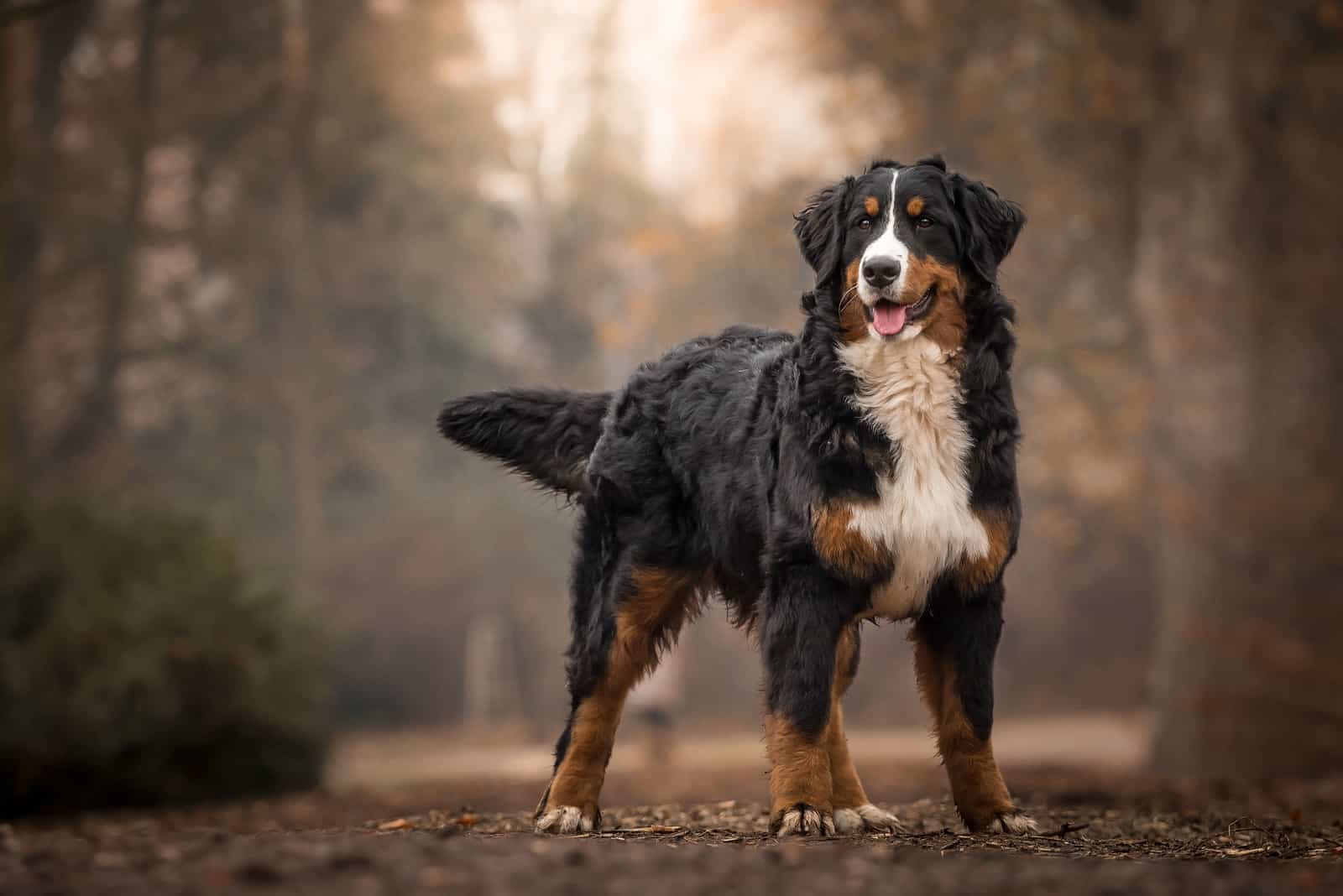
One of the things that you should be aware of is the fact that these pups probably won’t reach their full height and weight until they’re at least two years old.
This period can even extend for a year and a half more, so your Berner could become a fully grown large breed at the age of three.
These canines might be challenging to groom at times because they’re heavy shedders, just like Golden Retrievers, German Shepherds, Labrador Retrievers, etc. They require a great deal of attention, as well as regular activity.
Some of them drool in an excessive amount, so you’re going to have to wipe the drool off if you don’t want the slobber all over your place.
When Do Bernese Mountain Dogs Reach Full Size?
I’m sure you’re already aware that the Bernese canines aren’t a small dog breed, but it’s possible that you’re still having difficulties visualizing just how large these pups may become.
The best way to predict the size of your pup is to rely on the growth chart of this giant breed to simply get an idea of how huge they can become.
The paws of these pups are one of the signs of how much more they need to develop in order to reach their full size.
Those who have the opportunity to see what the parents of their pets look like will have the best idea of the ultimate size your pup will reach.
You can also try a DNA test, which might offer good assistance in determining at which point your pup will reach its adult size.
However, if you don’t mind waiting, you can simply check your dog’s weight and height from time to time until they reach at least 27 inches tall (although it can go up by a few inches) and at least 115 pounds.
You will notice that, in this growth chart, the maximum size can be reached by the twelfth month of life, but there is a possibility it won’t occur until the age of two.
Is Spaying/Neutering Going To Affect The Growth Of Bernese Mountain Dogs?
It’s natural that one of the primary goals of dog owners is to make sure that their puppies don’t have any health issues and that they grow up into stable and happy canines.
One of the procedures that are believed to help pups grow into calm and obedient dogs is spaying/neutering, depending on whether your pup is a male or female Bernese Mountain Dog.
Although this type of process is considered highly beneficial for the health of household pets, it shouldn’t be done too early either, or else it might have a negative effect on the dogs’ health.
According to certain studies that were published on the American Animal Hospital Association’s (AAHA) website, big dogs like Berners shouldn’t be spayed/neutered before early adulthood (from nine to fifteen months of age), or else they might experience joint problems and other health conditions.
It has been observed that big doggies that are spayed/neutered at too early an age experience movement and joint difficulties as they mature.
Therefore, this should be taken into consideration when determining the right time to do the operation.
How To Measure The Bernese Mountain Dog

In order to follow the Bernese Mountain Dog growth chart, you will first need to learn how to properly measure your canine.
Essentially, this shouldn’t take too much of your time, especially if your pup is well-trained and is able to follow your commands.
You can measure your pup’s weight in several different ways, but one thing is for sure – as the pup gets bigger, it will be more challenging to measure them.
If you want to be sure that your pet is maintaining a healthy weight, you should weigh them once per month.
Measuring Tips
The best way to weigh your Berner puppy at home is by measuring yourself first without the pup to check your weight. After that, you can pick up the pooch and weigh it together with yourself on the bathroom scale.
After you’re done, all you need to do is subtract your original weight from the second measurement, and you will receive the correct weight of your canine.
However, once your pooch grows to the point that you can’t pick it up anymore, you will need to find alternative ways to measure its weight.
One of the most common suggestions is to place the dog in a big enough container that is already on the scale, so you don’t have to lift the dog at all.
Keep in mind that the Berner needs to be still for a few seconds until the scale shows the right measurements. If your canine can’t stand or sit still during this time, you can try to give them a treat, their favorite chew toy, or anything else that you think will keep them calm.
Other Ways To Measure Your Pup
There are several other ways and choices available to you in order to measure your beloved pet.
They might not be your top choices, but if you don’t have access to a scale, these ideas are great substitutes to keep in mind:
• Take your pet to the vet – Owners who don’t have a scale (or at least one big enough for Bernese Mountain Dogs) can always take their pets to the vet.
The majority of owners usually take their pets to the vet’s office only if they’re sick or behave in a strange way. However, vets also have large scales for big dog breeds, just like Bernese Mountain Dogs, Irish Wolfhounds, St. Bernards, Great Swiss Mountain Dogs, and other big canines.
RELATED: Irish Wolfhound Lifespan and Health Problems – What You Need to Know
• Take the dog to a bus station – Or any other place that might have a large scale. People who travel long-distance usually need to check the weight of their luggage before the journey, which is why these types of stations usually have big scales, too.
Of course, you will need to ask for permission before you use the scale, but I’m sure that no employee will be able to resist the adorable face of your Berner pup.
What Is A Body Condition Score System?
This is an effective and objective type of measuring that will show you whether your pup has a healthy weight or they’re under/overweight.
Essentially, no tools are needed for this type of measurement, as it’s based on the physical touch and visual appearance of the canine.
It might be a challenging task to measure a Bernese Mountain Dog by using this method simply because it has a very thick and long coat, along with a specific body frame that might not show the signs of obesity even if it has already entered this phase.
However, if you have enough time and patience to measure your pup carefully, you can get good results which will give you a clear picture of whether your pup is overweight or not.
The Body Condition Score (BCS) uses a scale that ranges from one to nine, with a satisfactory score falling around five.
A canine is supposed to have a noticeable waistline and a belly that is bundled up tight in order to receive a five on this scale.
In addition, the rib cage should be easy to locate under the fur, but they shouldn’t show too much.
A score of one indicates that the pet’s body weight is critically low, while a score of nine indicates that the canine is overweight.
What If My Bernese Mountain Dog Is Overweight?
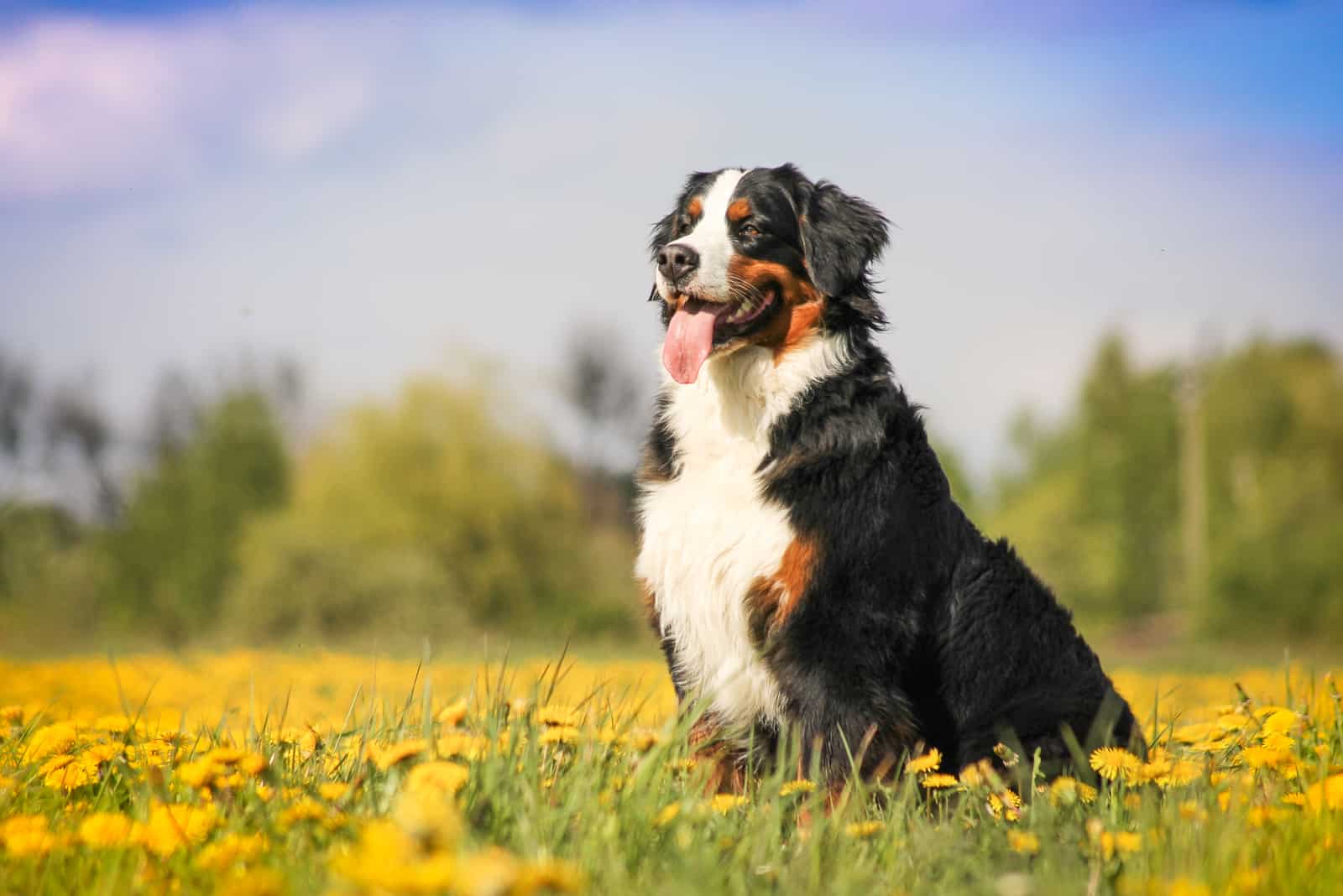
Unfortunately, there are many canines that have to carry an unhealthy amount of weight, especially large dogs that don’t spend the same amount of energy that they ingest through dog food.
It is a common misconception that male dogs become overweight more often than female pups, as the latter have more fat tissue than males.
The misconception is usually based on the fact that male pups are a bit larger than females, so they might need more food. However, females don’t spend as much energy as males, and they store fat more easily than their male counterparts.
Once you determine that your pup is overweight, you should be the one to help them lose the excess weight, which might cause serious health issues.
Of course, no actions should be taken before you speak to your vet. If a professional agrees that your pup needs to go on a diet and lose weight, it’s time to begin the process.
Here are some of the things that you can do to protect your pet and their health:
• Examine the food – Both the quality and quantity of the foods your canine ingests are equally important for its health. Even if you get your pet only the best quality dog food, it can still become overweight and unhealthy if it eats too much during one meal.
Make sure that both the quality and the amount of food are up to your pup’s dietary requirements and needs, not up to its wishes.
• Change exercise routine – There is a possibility that the dog simply doesn’t have enough of a workout during the day, as Bernese Mountain Dogs are quite energetic.
If these pups don’t get enough exercise, they will store all of the excess energy from the food as fat, which will lead them to obesity.
• Skip on the treats – A great number of dog owners give their pets additional treats to reward them for something they’ve done right.
Although this is generally a part of positive reinforcement, there might be other ways to reward your pet without using food.
Your pet does not require them, and removing them will assist them in shedding excess weight, as well!
Main Factors That Influence The Growth of Berners
There are several things that have an effect on the development of your pup, including the gene structure of each individual puppy, their diet, and the level of physical activity.
However, keep in mind that not every canine develops in the same way, so even if you do all the tests and incorporate a healthy lifestyle, you might not have the same results as other dogs.
• Diet – You have a responsibility to provide food that is both nutritious and balanced for your pet if you want it to enjoy optimum growth and good health.
You have the option of providing your dog with a raw diet, which will mostly include raw meat and vegetables that have been prepared.
There is also the option for you to provide your dog with branded canine food of high quality.
Consult your veterinarian for guidance if you are overwhelmed by the number of products that assert they produce the highest quality food for your pet.
In general, Bernese Mountain Dogs consume food twice every day. Avoid giving your dogs an excessive number of treats between meals. If you decide to do that, be sure you serve them somewhat less food at the following meal.
• Genetic background – The majority of people estimate the size of their prospective puppy by taking a glance at the dimensions of both of the dog’s parents.
Keeping in mind the species, height, and weight of the dog’s parents is a great way to obtain a good idea of how large a puppy will become in the long run.
Descendants from huge types of dogs tend to also be large, whereas offspring from smaller breeds tend to be smaller.
The size of the Bernese ancestors will have a considerable influence on the size and appearance of the puppy by the time it is one year old.
• Training – These pups are known for their boundless levels of energy. They were raised to be active canines and hence require both mental and physical stimulation on a regular basis.
They require at least one hour of physical activity on a daily basis. You have the option of breaking this up into two or more distinct workout sessions.
A routine that consists of thirty minutes of intense play in the yard followed by a thirty minute walk has proven itself effective so far.
The ancestors of these pups were born and raised in the Swiss Alps, so these canines might not be used to the warm climate of certain parts of the States.
Therefore, you need to take good care of your pet, especially if you live in a place with warmer weather.
How Do I Make Sure My Bernese Mountain Dog Is Healthy?
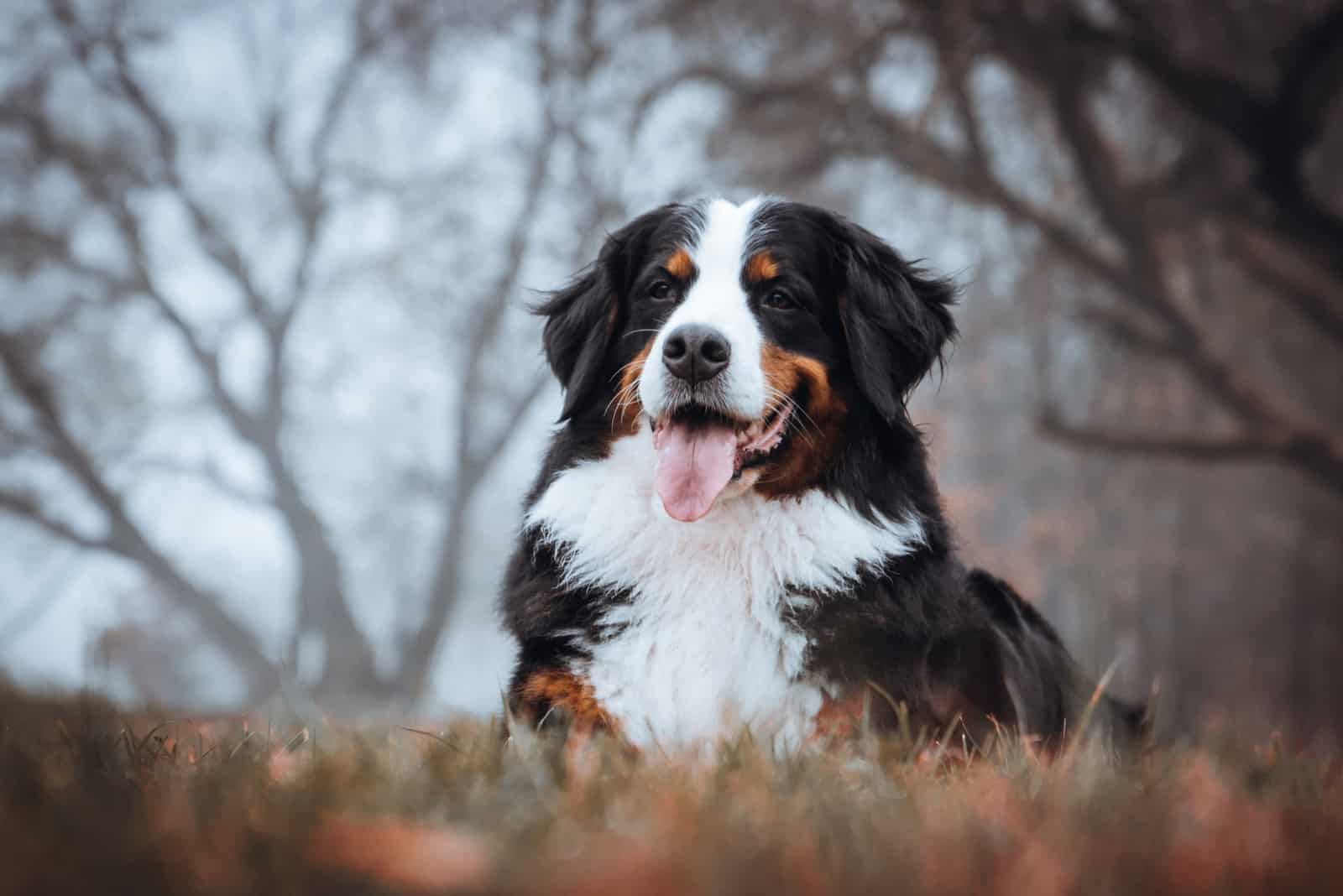
Just like every other dog breed, Bernese Mountain Dogs can develop certain kinds of health issues that might be caused by different factors, including the dog’s weight, age, or genetic background.
A great number of pets are considered obese, mostly because of the incorrect feeding system, though this can also be accompanied by their genetic background or other factors.
Elbow and hip dysplasia, diabetes, Von Willebrand, arthritis, and cataracts are just some of the health problems that can appear as a consequence of poor genetics or lifestyle.
These health issues might also have a negative impact on the Berner’s lifespan, but not as much as their size. Larger canines usually live shorter lives than small ones, so it’s no surprise that these pups live up to eight or nine years at most.
What Is The Price Of Owning A Bernese Mountain Dog?
The estimated price of a good Berner is anywhere between $1500 and $3000; however, this is only the start-up price.
During the first year of your dog’s existence, it will require multiple immunizations, be neutered or spayed, and require all of the necessities such as a bed, dishes, brushes, dog collars, harnesses, leashes, and some kind of chew toys, all of which will add to your costs.
It’s safe to say that during the first year of the pup’s life, you’ll probably spend a lot of time online on Amazon, Chewy, and other shopping sites that offer dog equipment.
To this, you need to add the price of food, which can be rather substantial for a large dog that consumes a lot of it.
RELATED: Bernese Mountain Dog Feeding Chart: Berner’s Healthy Diet
The Bernese Mountain Dog will set you back around $200 on a monthly basis, and over the course of its life, the expenses might go over $20,000.
Wrapping Up
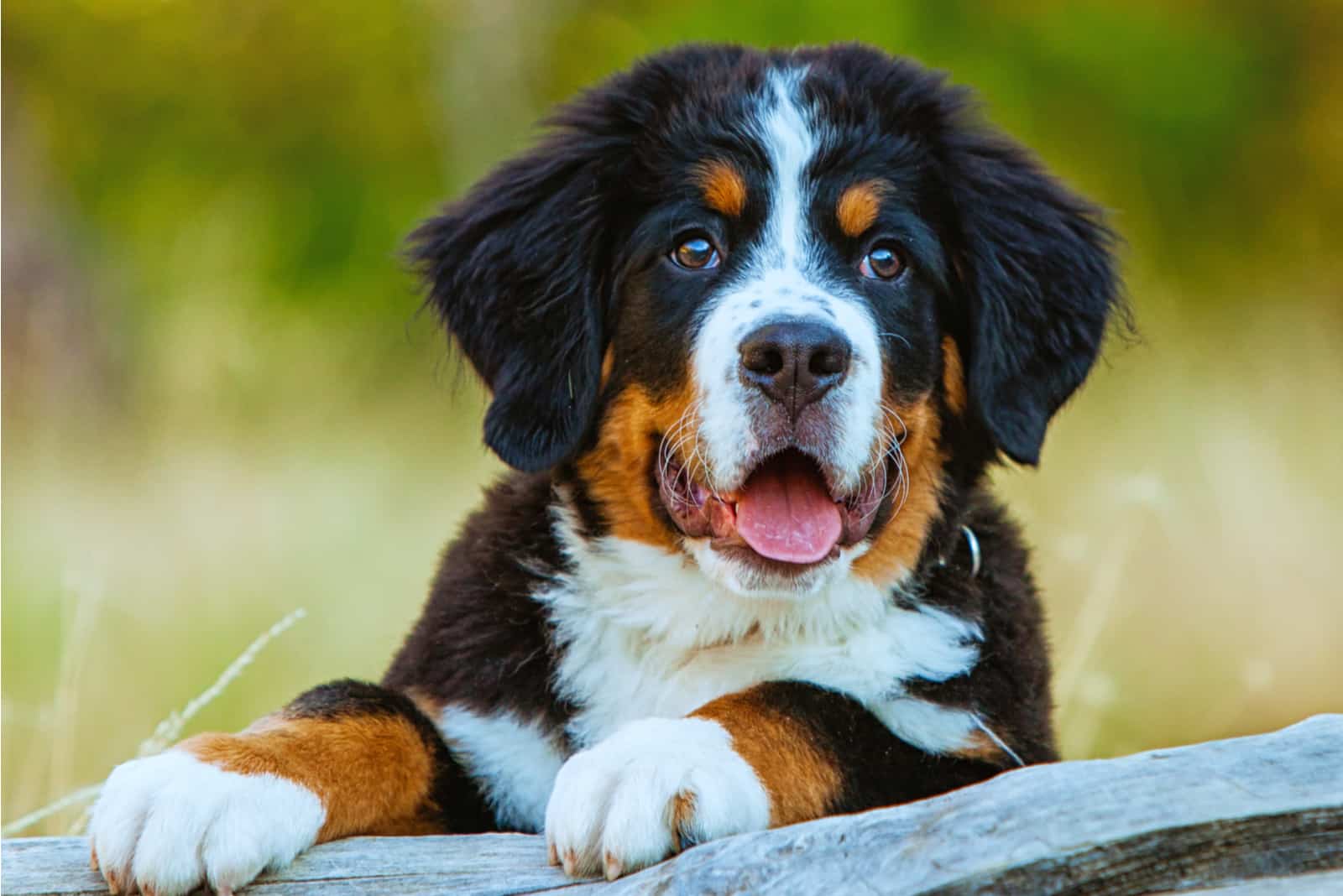
Bernese Mountain Dog Growth Chart can be of great help to all dog owners who don’t want to simply check their dog’s weight, but also monitor their health and overall development.
Growth charts are critical during the first year of a canine’s life as they show the suggested timeline of the puppy’s weight and height that complies with the breed standard of the American Kennel Club (AKC).
Bernese puppies are indeed quite interesting and adorable, but it might be challenging to raise them from time to time.
However, I’m sure that this type of canine will stick to your heart quite a lot, especially with their big puppy eyes and the wonderful temperament that they possess.
Bernese Mountain Dogs are playful pups that can be amazing working dogs as well, depending on your needs and requirements.
READ NEXT:
The Mini Bernese Mountain Dog: Shrinking A Gentle Giant
